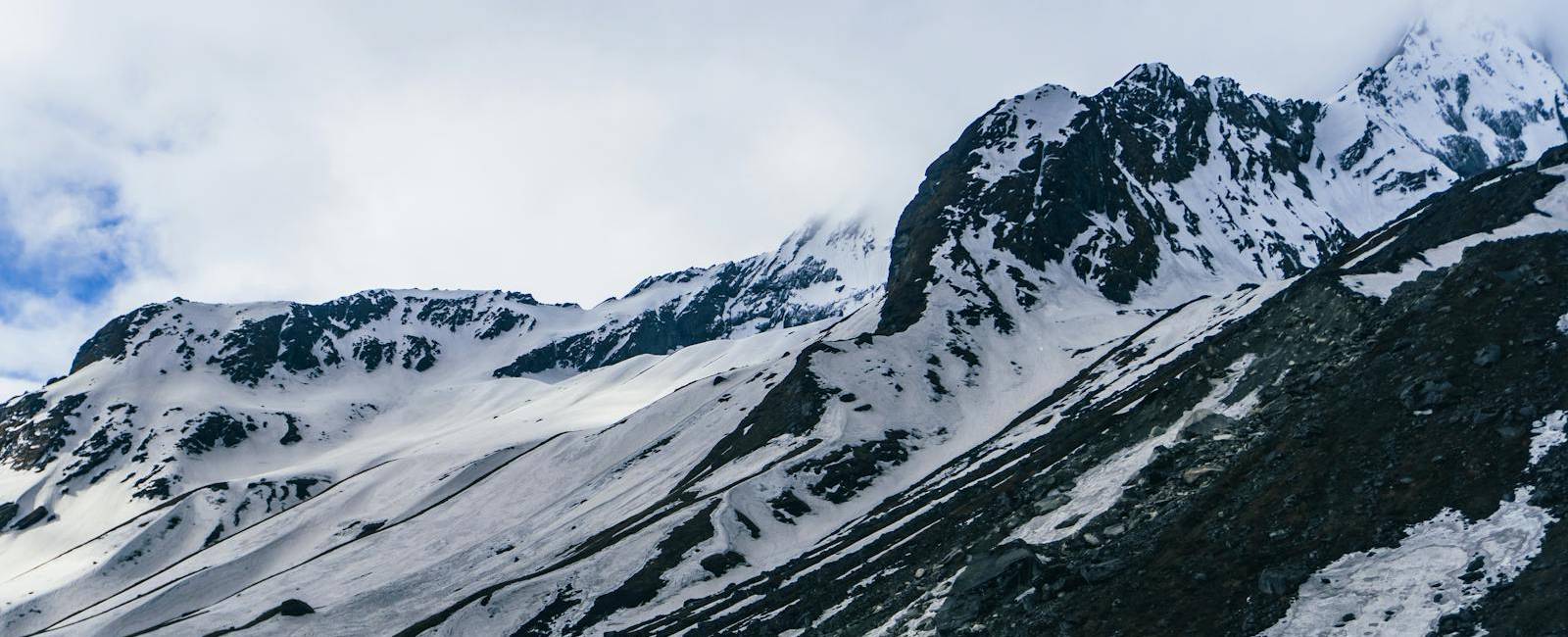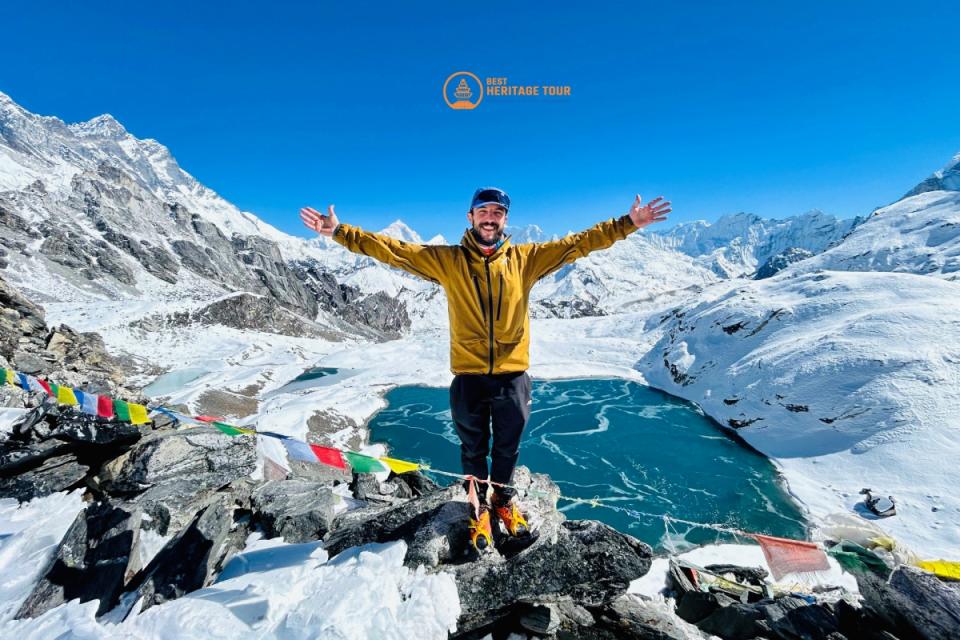The Everest Three Pass Trek is often described as the ultimate trekking adventure in Nepal. It combines the classic Everest Base Camp route with three high-altitude passes - Kongma La (5,535m), Cho La (5,420m), and Renjo La (5,340m) - each offering breathtaking Himalayan panoramas. Unlike shorter treks, the Three Pass journey can take 18-21 days and pushes trekkers to their physical and mental limits.
While most adventurers spend weeks training for the physical challenge and budgeting for permits, guides, and accommodation, they often underestimate the daily expenses for basic utilities like hot showers, Wi-Fi, and charging electronic devices.
These small services are not included in trek packages and can add up significantly over the course of three weeks. Prices also fluctuate depending on altitude, availability, and demand. Understanding these costs helps trekkers budget wisely, avoid surprises, and enjoy the comforts that can make life on the trail much easier.
In this guide, we’ll break down the real costs of showers, Wi-Fi, and charging along the Everest Three Pass Trek, explain why they’re expensive, and share tips to save money while still staying comfortable on your Himalayan adventure.
The Cost of Showers on the Everest Three Pass Trek
Showers in the Everest Region: What to Expect
When you imagine trekking in the Himalayas, you might not think much about showers - but after days of sweating, climbing, and battling dust, a hot shower can feel like pure luxury. Most teahouses along the Everest route offer showers, but they are not like the ones you’d find at home.
-
Lower altitude lodges often use gas-heated water.
-
Mid-altitude lodges may provide solar-heated showers.
-
High-altitude areas often rely on limited buckets of heated water.
Some showers are enclosed in proper bathrooms, while in remote villages, you may simply get a bucket of warm water in a shed. Either way, the comfort is welcome.
Average Shower Costs by Altitude
Here’s a breakdown of typical shower costs on the Everest Three Pass Trek:
-
Lukla to Namche Bazaar (2,800m - 3,440m): USD $2-3 per shower
-
Tengboche, Dingboche, Chukhung (3,800m - 4,400m): USD $4-5 per shower
-
Lobuche, Dzongla, Gokyo (4,900m - 5,000m+): USD $5-6+ per shower
The higher you go, the more expensive it gets. This is because gas cylinders and supplies must be transported by porters or yaks, which dramatically increases the cost of providing hot water.
How Often Should You Shower?
It’s not realistic - or healthy - to shower daily at high altitudes. Most trekkers limit showers to once every 3-4 days. Between showers, wet wipes or biodegradable wipes are handy for staying fresh.
Tips for Saving Money on Showers
-
Bundle up: Stay clean with base layers so you don’t sweat through your main clothes.
-
Use wet wipes: Especially useful on colder days.
-
Shower in lower villages: It’s cheaper and warmer compared to higher elevations.
The Cost of Wi-Fi on the Everest Three Pass Trek
Internet in the Himalayas
You might be surprised to know that Wi-Fi is available in most villages along the Everest route. Thanks to Everest Link, trekkers can stay connected even in remote valleys. However, internet here is not free - and speeds can vary from decent in Namche Bazaar to painfully slow in the high passes.
Everest Link Wi-Fi Cards
Everest Link sells prepaid Wi-Fi cards that can be used across multiple villages. The most common options are:
-
200MB card: USD $5-6
-
600MB card: USD $12-15
These cards are valid for one device, so if you want multiple gadgets online, you’ll need separate cards.
Where Wi-Fi Works Best
-
Namche Bazaar: Strongest signal, often good enough for video calls.
-
Tengboche, Dingboche, Gokyo: Decent for messaging and emails.
-
High Pass regions (Lobuche, Dzongla, Renjo La area): Spotty or no coverage.
Alternative: Local SIM Cards
Trekkers can also buy NCELL or Nepal Telecom SIM cards in Kathmandu. NCELL works fairly well up to Namche Bazaar, but coverage fades beyond that. Nepal Telecom sometimes works higher, but still unreliable.
Wi-Fi Costs Add Up
Over a 20-day trek, if you buy a few cards, expect to spend around $30-50 just on internet access.
Tips to Save on Wi-Fi
-
Download offline maps (Maps.me or Google Maps offline).
-
Pre-download music, books, and movies in Kathmandu.
-
Use Wi-Fi sparingly - update family every few days instead of daily.
The Cost of Charging Electronics
Electricity on the Trek
Electricity is available in all villages, but it’s often generated from solar panels or small hydro plants. This means supply is limited, especially in high-altitude areas where cloudy weather is common.
Trekkers need to charge:
-
Phones
-
Cameras
-
Power banks
-
Headlamps
-
GPS watches
Typical Charging Costs
-
Lower altitude (Lukla - Namche): $2-3 per hour or per device
-
Mid-altitude (Dingboche, Chukhung): $3-5 per charge
-
High altitude (Lobuche, Gokyo, Dzongla): $4-6+ per charge
Some lodges charge per hour, others per device, and a few allow unlimited charging if you’re staying with them (rare at higher altitudes).
Tips to Save on Charging Costs
-
Carry a 20,000mAh+ power bank.
-
Bring a small solar charger for sunny days.
-
Put devices on battery saver mode.
-
Switch phones to airplane mode when not in use.
-
Carry extra camera batteries.
Over the course of the trek, expect to spend around $40-60 for charging if you rely only on teahouses.
Why Prices Increase With Altitude
One question trekkers often ask is: Why is everything so expensive the higher I go?
The answer is simple: logistics and scarcity.
-
All supplies must be carried by porters or yaks from Lukla. There are no roads in the Everest region.
-
Gas cylinders for showers and equipment must be flown to Lukla, then carried up.
-
Solar electricity is limited, especially during cloudy weather.
-
High demand and low supply make basic utilities more valuable.
This is why you might pay $2 for a shower in Namche but $6 for the same shower in Lobuche.
Budgeting for Showers, Wi-Fi, and Charging
So, how much should you set aside for these comforts?
Here’s a rough estimate for a 20-day Everest Three Pass Trek:
-
Showers: $30-40 (5-7 showers at $4-6 each)
-
Wi-Fi: $30-50 (depending on usage)
-
Charging: $40-60 (per device, per charge)
Total Extra Budget: $100-150 for utilities
This might not sound like much compared to the trek cost, but for many trekkers, it’s surprising how quickly these small expenses add up.
Tips to Minimize Extra Costs on the Trek
Here are some smart ways to reduce your spending while still staying comfortable:
-
Limit Showers - Plan to shower every 3-4 days. Use wet wipes in between.
-
Bring a Power Bank - A must for cameras, phones, and headlamps.
-
Go Offline - Download maps, movies, and books before trekking.
-
Share Costs - If trekking in a group, share a Wi-Fi card.
-
Plan for Cold Nights - Carry warm clothes instead of relying on hot showers for warmth.
-
Carry Extra Batteries - Camera and GoPro users should bring spares.
Conclusion
The Everest Three Pass Trek is a true Himalayan adventure, testing trekkers with altitude, endurance, and long days on the trail. But beyond the physical challenge, it’s also important to plan for the small daily costs that come with staying comfortable in the world’s highest mountains.
-
Showers range from $2-6, depending on altitude.
-
Wi-Fi costs about $5-15 per card, adding up over the trek.
-
Charging devices can cost $2-6 per charge, with higher prices at higher altitudes.
Over the course of the trek, most people spend an additional $100-150 on these utilities. For many, this is a small price to pay for the comfort of a hot shower, staying connected with family, and keeping devices alive for those once-in-a-lifetime photos.
By budgeting wisely and using the tips shared here, you can enjoy the best of both worlds: saving money while still enjoying the luxuries that make the Everest Three Pass Trek more comfortable.
Ready to plan your journey? Whether you’re looking for a guided trek, detailed cost breakdown, or local advice, Best Heritage Tour is here to help you make the most of your Everest adventure.
Contact Best Heritage Tour today to start planning your trek of a lifetime!
Phone: +977-9851149197 / +977-9810043046
Email: info@bestheritagetour.com / bestheritagetour@gmail.com
Booking/Info: www.bestheritagetour.com
Office: Thamel Marg, Kathmandu, Nepal
Author: Best Heritage Tour
Date: 27th August, 2025


